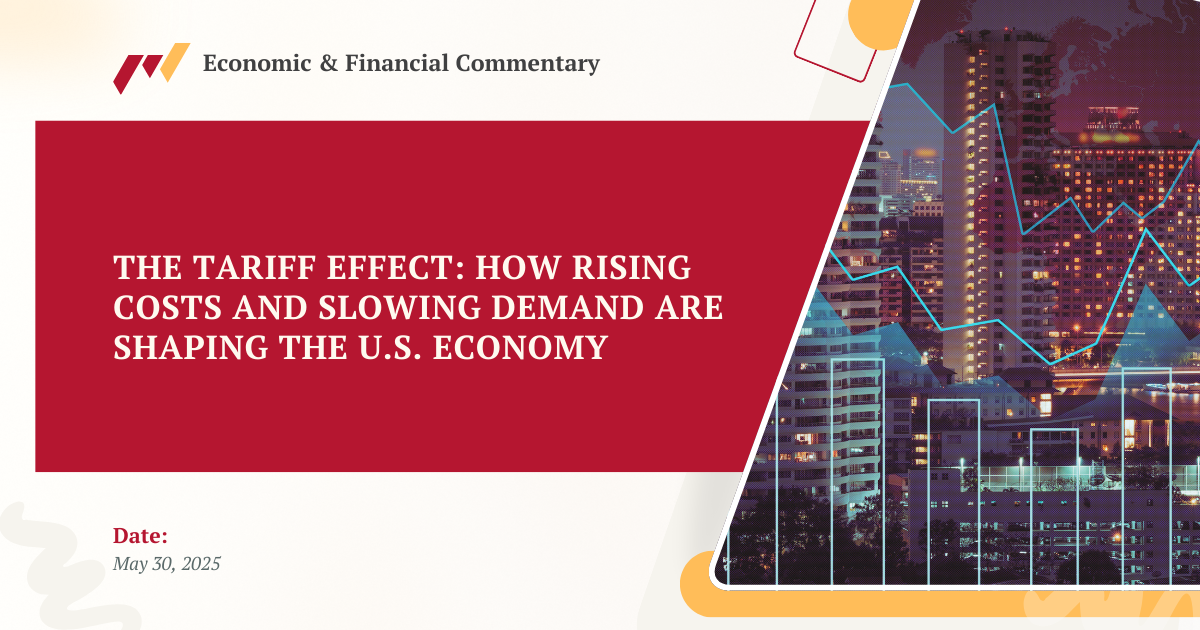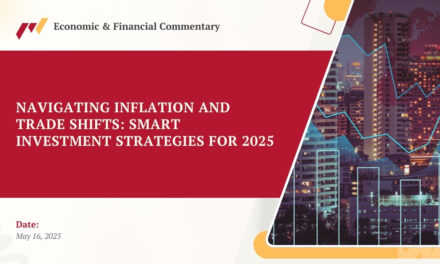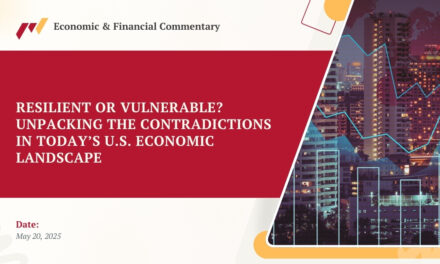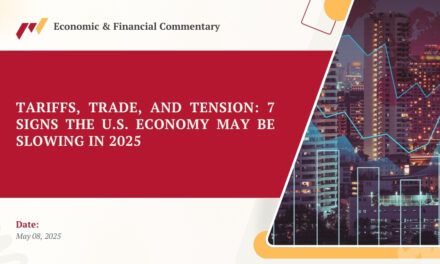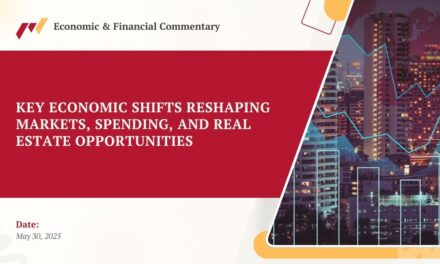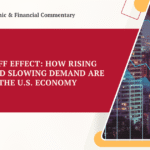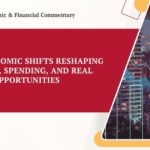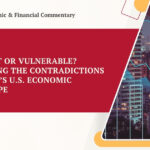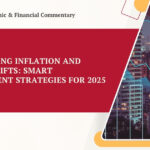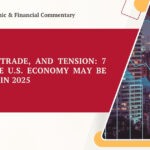The Tariff Effect: How Rising Costs and Slowing Demand Are Shaping the U.S. Economy
The U.S. economy is navigating a challenging mix of rising tariffs, slowing demand, and productivity gains that are temporarily cushioning inflation. While the labor market is cooling, price pressures are building in some sectors, creating mild stagflation risks. Here’s a look at the latest trends driving the outlook.
1. Economic Growth Slowing Under Policy Pressures
Recent data confirms a slowdown in demand:
– Higher tariffs, reduced government spending, tighter immigration enforcement, and uncertainty are weighing on spending and investment.
– Job creation has slowed, with hiring interest and turnover at low levels.
2. Stagflation Signals Emerging
– ISM Services Index fell to 50.1 in July, just above the expansion threshold.
– Business activity, new orders, and employment declined, while prices paid increased.
– Tariffs are driving cost increases across multiple industries, especially transportation and warehousing.
3. Tariffs Begin to Influence Inflation
– Tariff impact has been delayed by inventory front-running — businesses stocked up before higher rates took effect.
– As inventories decline, prices are expected to rise.
– July’s Core CPI is forecast at +0.3% MoM, the highest in six months, pushing YoY to 3.0%.
4. Productivity Offers a Temporary Cushion
– Labor productivity grew 2.4% annualized in Q2, above historical averages.
– Higher efficiency allows companies to absorb some cost increases without raising prices as much.
– Unit labor costs remain aligned with the Fed’s 2% inflation target, showing wage growth is not a major inflation driver.
5. Retail Sales: Boost from Autos, Underlying Weakness
– July retail sales forecast +0.6% MoM, mostly due to:
– Auto sales rebound to 16.4M annualized (+7% from June).
– Higher prices in certain categories.
– Excluding autos, sales rise just 0.3%, meaning inflation-adjusted spending is flat.
– Consumers show spending fatigue and reduced discretionary purchases.
6. Industrial Production Holds Steady
– July industrial production expected to be flat.
– Traditional capital investment slowing, but spending on software and AI-related tech remains strong.
– Many firms are delaying large projects until tariff and economic uncertainty clears.
7. Federal Reserve Policy Outlook
– Fed still expected to cut rates by 25 bps in September, prioritizing labor market softness over moderate inflation gains.
– Long-term interest rates are trending toward neutral, with the 10-year Treasury yield’s fair value near 4%.
What This Means for Businesses & Investors
The U.S. economy is in a balancing act:
– Businesses should prepare for higher input costs, slower sales growth, and possible shifts in supply chains.
– Investors may want to focus on sectors with strong productivity, pricing power, and exposure to technology-driven growth.
This blog is a summary and commentary based on publicly available insights from Wells Fargo’s economic report dated August 08, 2025. All rights belong to the original publisher.

